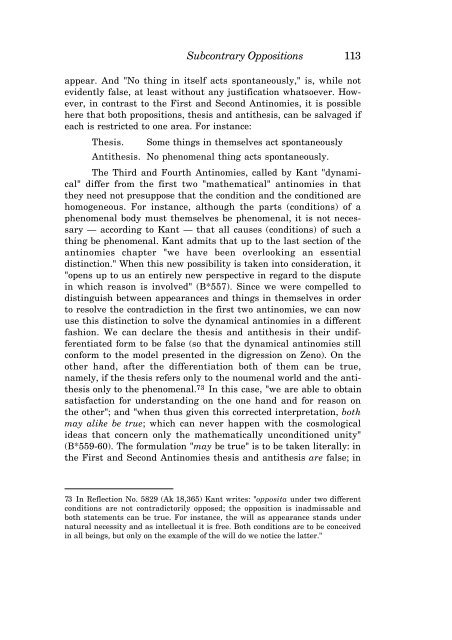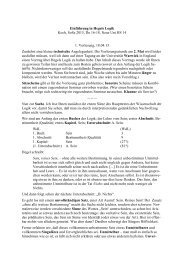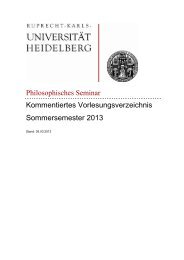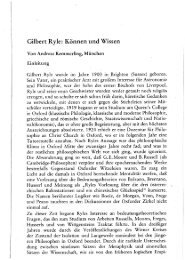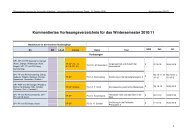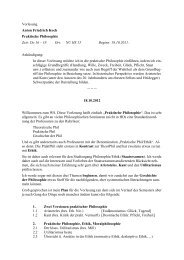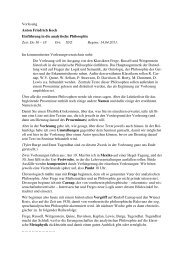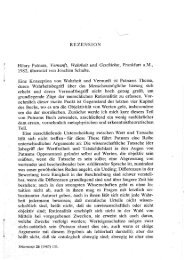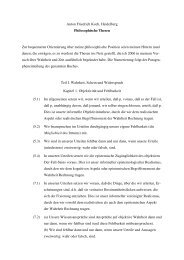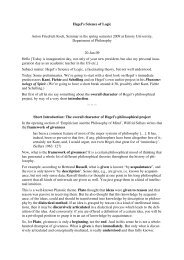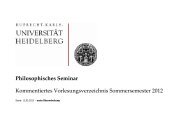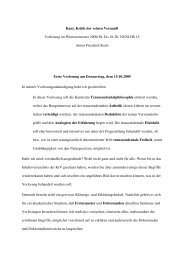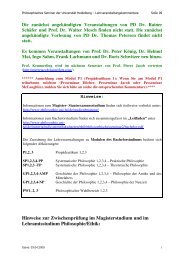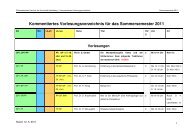KANT'S CRITIQUE OF TELEOLOGY IN BIOLOGICAL EXPLANATION
KANT'S CRITIQUE OF TELEOLOGY IN BIOLOGICAL EXPLANATION
KANT'S CRITIQUE OF TELEOLOGY IN BIOLOGICAL EXPLANATION
You also want an ePaper? Increase the reach of your titles
YUMPU automatically turns print PDFs into web optimized ePapers that Google loves.
Subcontrary Oppositions 113<br />
appear. And "No thing in itself acts spontaneously," is, while not<br />
evidently false, at least without any justification whatsoever. However,<br />
in contrast to the First and Second Antinomies, it is possible<br />
here that both propositions, thesis and antithesis, can be salvaged if<br />
each is restricted to one area. For instance:<br />
Thesis. Some things in themselves act spontaneously<br />
Antithesis. No phenomenal thing acts spontaneously.<br />
The Third and Fourth Antinomies, called by Kant "dynamical"<br />
differ from the first two "mathematical" antinomies in that<br />
they need not presuppose that the condition and the conditioned are<br />
homogeneous. For instance, although the parts (conditions) of a<br />
phenomenal body must themselves be phenomenal, it is not necessary<br />
— according to Kant — that all causes (conditions) of such a<br />
thing be phenomenal. Kant admits that up to the last section of the<br />
antinomies chapter "we have been overlooking an essential<br />
distinction." When this new possibility is taken into consideration, it<br />
"opens up to us an entirely new perspective in regard to the dispute<br />
in which reason is involved" (B*557). Since we were compelled to<br />
distinguish between appearances and things in themselves in order<br />
to resolve the contradiction in the first two antinomies, we can now<br />
use this distinction to solve the dynamical antinomies in a different<br />
fashion. We can declare the thesis and antithesis in their undifferentiated<br />
form to be false (so that the dynamical antinomies still<br />
conform to the model presented in the digression on Zeno). On the<br />
other hand, after the differentiation both of them can be true,<br />
namely, if the thesis refers only to the noumenal world and the antithesis<br />
only to the phenomenal. 73 In this case, "we are able to obtain<br />
satisfaction for understanding on the one hand and for reason on<br />
the other"; and "when thus given this corrected interpretation, both<br />
may alike be true; which can never happen with the cosmological<br />
ideas that concern only the mathematically unconditioned unity"<br />
(B*559-60). The formulation "may be true" is to be taken literally: in<br />
the First and Second Antinomies thesis and antithesis are false; in<br />
73 In Reflection No. 5829 (Ak 18,365) Kant writes: "opposita under two different<br />
conditions are not contradictorily opposed; the opposition is inadmissable and<br />
both statements can be true. For instance, the will as appearance stands under<br />
natural necessity and as intellectual it is free. Both conditions are to be conceived<br />
in all beings, but only on the example of the will do we notice the latter."


